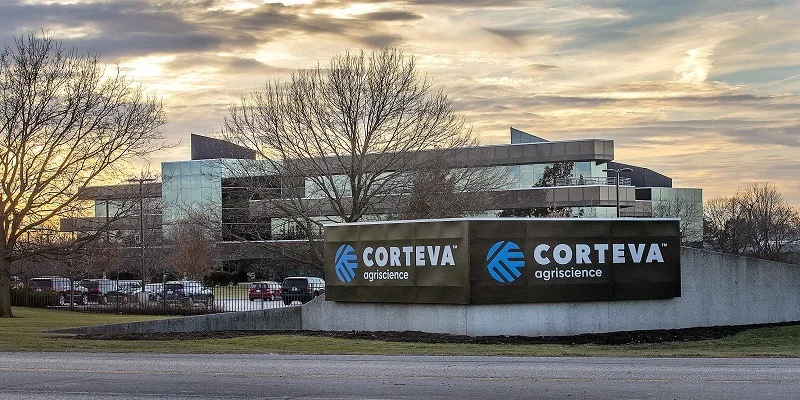When you and I picture a farmer, what comes to mind? For most of us, it’s a romantic, almost mythic image: a solitary figure silhouetted against a sunrise, hands in the soil, relying on generations of instinct and a deep, personal connection to the land. It’s a powerful image. It’s also dangerously obsolete.
The truth is, the modern farm is one of the most complex, data-intensive, and high-stakes environments on the planet. It’s a biological factory, a commodities trading desk, and a meteorological observatory all rolled into one. The idea that a single person can optimize every variable—soil health, weed pressure, crop rotation, market timing, and a dozen other factors—is a fantasy. To cling to it is to misunderstand the sheer scale of the challenge we face in feeding our world.
So, what if the greatest agricultural breakthrough of our time isn't a new kind of seed or a self-driving tractor? What if it’s a new kind of operating system? Not one made of silicon and code, but of people, data, and shared expertise. A living, breathing, distributed intelligence network designed for one purpose: success.
I’ve been tracking the rise of precision agriculture for years, but most of the focus has been on drones and sensors. What I saw happening in the southern Plains of the United States, however, felt different. It felt more human, more integrated. It’s a paradigm shift hiding in plain sight.
The challenge there is immense. We’re talking about a vast, diverse territory where a farmer might be harvesting cotton in one field while planning to plant winter wheat in the next. But even that is an oversimplification. Is that wheat for grazing cattle? Is it a cover crop, planted primarily to protect and enrich the soil after the cotton is gone? Or is it a cash crop, destined for harvest and sale? Each of these goals requires a completely different strategy, a different set of inputs, a different calculus of risk and reward. This is where the old model breaks down. The sheer number of variables creates a kind of decision paralysis, and a single wrong choice can have consequences that ripple through an entire season.
The Human Algorithm
This is where we meet people like Katie Verett. Her official title is “market development specialist” with Corteva Agriscience—which, in simpler terms, means she functions as a critical node in a human-centric intelligence network. She isn’t just selling a product; she’s integrating data and expertise. She works with local territory managers, agronomists, and retailers, creating a multi-layered support system that wraps around the individual farmer.

This is the kind of breakthrough that reminds me why I got into this field in the first place. It’s not about a single gadget; it’s about redesigning an entire system around intelligence and collaboration.
Think of it like this. The farmer is the CEO of their operation. They set the objective: “My goal for this field is a high-yield wheat harvest.” Verett and her team act as a specialized consultancy. They take that objective and process it through their network’s collective knowledge. They know the soil types, the most common resistant weeds in that specific area, and the crucial windows for planting and treatment.
For instance, they might recommend a specific tool like Quelex herbicide. Now, a skeptic might see that as just a sales pitch. But look deeper. They recommend it because it’s effective against the region’s tough broadleaf weeds, yes, but also because it has a superior three-month crop rotation interval. This isn’t a trivial detail—it's a critical piece of data that gives the farmer immense flexibility for their next crop, creating a strategic advantage that pays off months down the line. The ability to pivot from wheat to a summer crop without a long waiting period is a massive economic and operational win.
The speed and complexity of this is just staggering—it’s a constant feedback loop of soil data, historical performance, weather patterns, market pressures, and deep human experience all being processed and synthesized in real-time to deliver a recommendation that isn’t just a guess but a deeply informed strategic move. It's a human algorithm.
This isn't so different from the way the ARPANET, the precursor to our modern internet, first connected research universities. It wasn't about the cables; it was about creating a network to share specialized knowledge and processing power to solve problems that no single institution could tackle alone. We are witnessing the same principle applied to the land itself. We’re moving from the era of the isolated mainframe—the lone farmer—to the era of the distributed cloud.
Of course, with any powerful, integrated system comes a profound responsibility. The trust placed in this network by a farmer is immense. The recommendations carry the weight of a family’s livelihood. Maintaining the integrity, objectivity, and focus of that network on the farmer’s success is the absolute core of the entire model. It’s a delicate, essential balance.
But imagine the possibilities. What happens when we scale this? When this collaborative, data-driven, human-centric model becomes the norm for every complex challenge we face? Are you starting to see it? This isn't just a story about farming. It's a blueprint for a smarter, more collaborative future.
The most popular vision of the future is one of automation, where human input becomes obsolete. I believe that vision is fundamentally flawed. The truly powerful future, the one we should be building, isn't about replacing human expertise. It’s about amplifying it. It's about connecting it. The most advanced technology we will ever create is a network of brilliant, dedicated people working together. We're not just learning how to grow better crops; we're learning how to cultivate a new kind of collective intelligence, one acre at a time.
Reference article source: